Soumya travels to search for his roots in the ancestral village of his forefathers. An exclusive for Different Truths.

My grandfather called me the Prince of Wales of Monihara in jest.
Monihara, meaning a lost jewel is the name of our ancestral village in a remote part of Bengal. My grandfather had left the village for studies, ultimately becoming one of the first engineers in our country. Ever since our family has produced a long line of engineers from every major institution in the country and abroad. Many have settled right across the country and the globe but hardly anyone bothered to visit our village again.
Monihara, meaning a lost jewel is the name of our ancestral village in a remote part of Bengal. My grandfather had left the village for studies, ultimately becoming one of the first engineers in our country. Ever since our family has produced a long line of engineers from every major institution in the country and abroad.
My father had last been there as a child and a previous plan of our family trip there got cancelled by his sudden illness and untimely death. I too used to call my daughter, Princess of Monihara and they like me were curious about our roots probably because they were from a mixed cultural background.
I made enquiries from cousins, who have been there and got the contact details of relatives who were still living there. They were very welcoming and appeared excited to meet us. Going there had become much easier now at least by car as there were metaled roads right up to the village and there was a bridge across the stream on the way, which earlier had to be crossed by bullock cart or foot or a four-wheel-drive all-terrain vehicle.
I Googled the route and was interested to find that the only two landmarks mentioned in the map, a temple and a school were both established by my forefathers. Although we were asked to stay there in our cousins’ house or in the panchayat hall or they suggested lodgings in a nearby tourist destination, we arranged a government guest house not far from there.
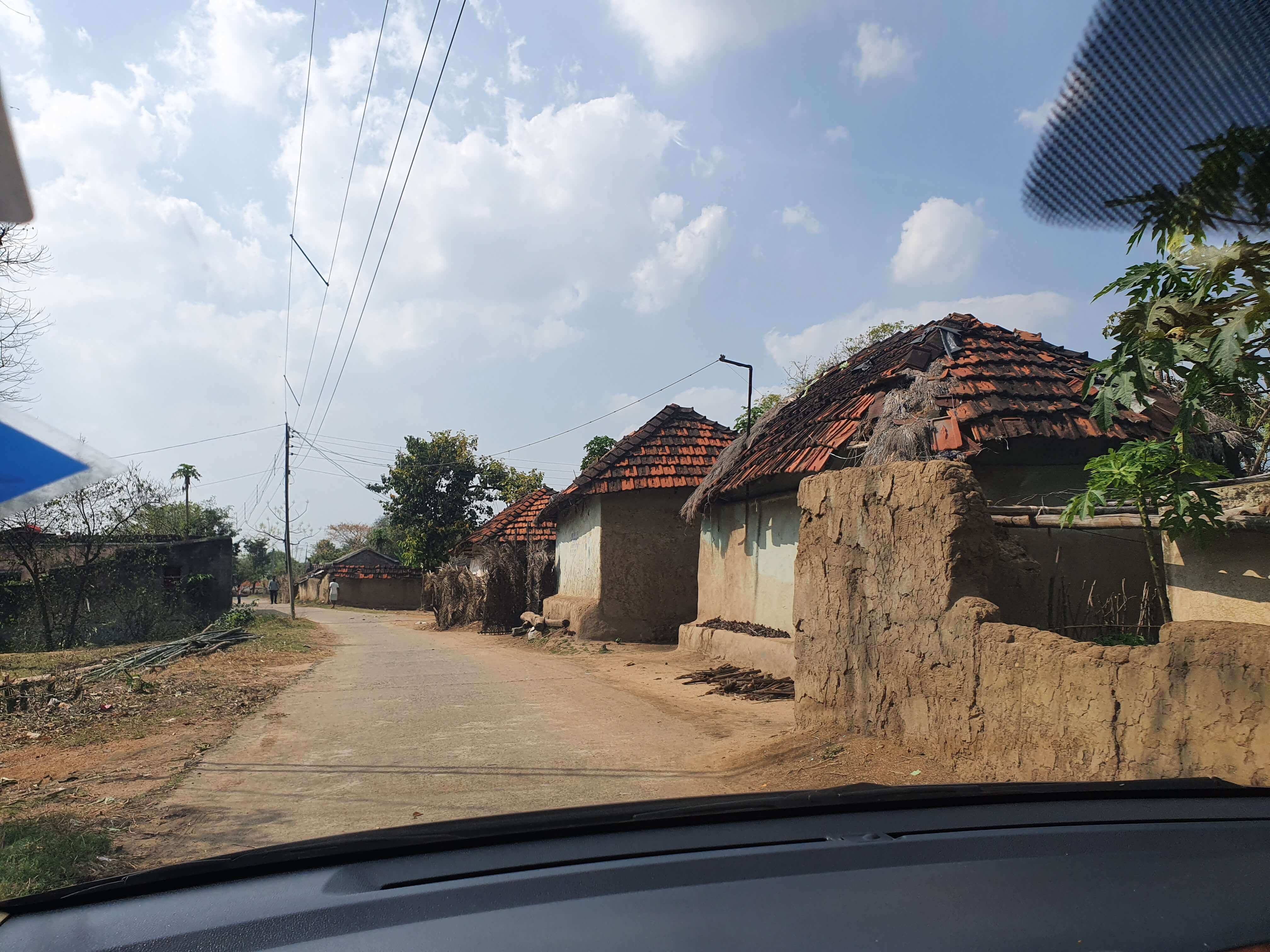
I Googled the route and was interested to find that the only two landmarks mentioned in the map, a temple and a school were both established by my forefathers. Although we were asked to stay there in our cousins’ house or in the panchayat hall or they suggested lodgings in a nearby tourist destination, we arranged a government guest house not far from there. My cousin had insisted that we have lunch there and said that mentioning his name would get us directions. He also kept calling to check our progress throughout the journey, urging us to hurry and have a traditional rural breakfast of muri or puffed rice.
We, however, left the highway for the country roads well past morning and finally, the beautiful rugged countryside came into view. This was the Lal Matir Desh, the land of the red soil. Low hills on the horizon, boulders scrub and palm trees both Khajur or Indian date and tal or tadh, a palm peculiar to this area, once ignored but now appreciated as a superfood; dotted the rough undulating landscape. Occasionally, the road would disappear into deep forest land earlier the Maoist stronghold in the area, but now quiet enough for a trickle of tourism to resume.
Asking direction from a few villages we passed as connectivity problems made Google directions vanish, we went through narrower and narrower roads till we reached our destination.
Mention of my cousin’s, actually second cousin’s nickname immediately got us detailed and complicated directions. By now connectivity had returned and we could call our prospective host and warn him that we were approaching.
Mention of my cousin’s, actually second cousin’s nickname immediately got us detailed and complicated directions. By now connectivity had returned and we could call our prospective host and warn him that we were approaching. Soon a kind gentleman started walking in front of the car and guided us right up to the host’s house and showed us where to find a bit of space to park.
This gentleman turned out to be our host. The heap of ancient bricks we were standing in front of was the ruins of our three hundred years old family house.
Our host told us not to be alarmed and took us through to a portion that was repaired somewhat and was his residence. He told us that he had fixed his portion to the best of his ability and lived there with his wife, on the earnings from the land and ponds. He was also the village representative of Trinamul, the party in power and thus the most important person in the village. He was extremely hospitable.
We were served on the floor in a row on leaf plates, a choice we made, as he gave us the option of table chairs and copper plates if we wanted. Our driver was also graciously invited and served alongside us. I appreciated the magnanimity of this, as they did not ask his caste or religion, and being conservative Brahmins they wouldn’t serve non-Brahmins.
We were served on the floor in a row on leaf plates, a choice we made, as he gave us the option of table chairs and copper plates if we wanted. Our driver was also graciously invited and served alongside us. I appreciated the magnanimity of this, as they did not ask his caste or religion, and being conservative Brahmins they wouldn’t serve non-Brahmins. But as guests, we were above caste.
We were served rice from the farm, kolai daal, a staple of the region; posto or poppy seeds curry, something peculiar to this region and something people from this region cannot do without, even if you’ve not been here for generations; people like us; fish from the ponds owned by the family and vegetables and salads from the kitchen garden.
We were served rice from the farm, kolai daal, a staple of the region; posto or poppy seeds curry, something peculiar to this region and something people from this region cannot do without, even if you’ve not been here for generations; people like us; fish from the ponds owned by the family and vegetables and salads from the kitchen garden.
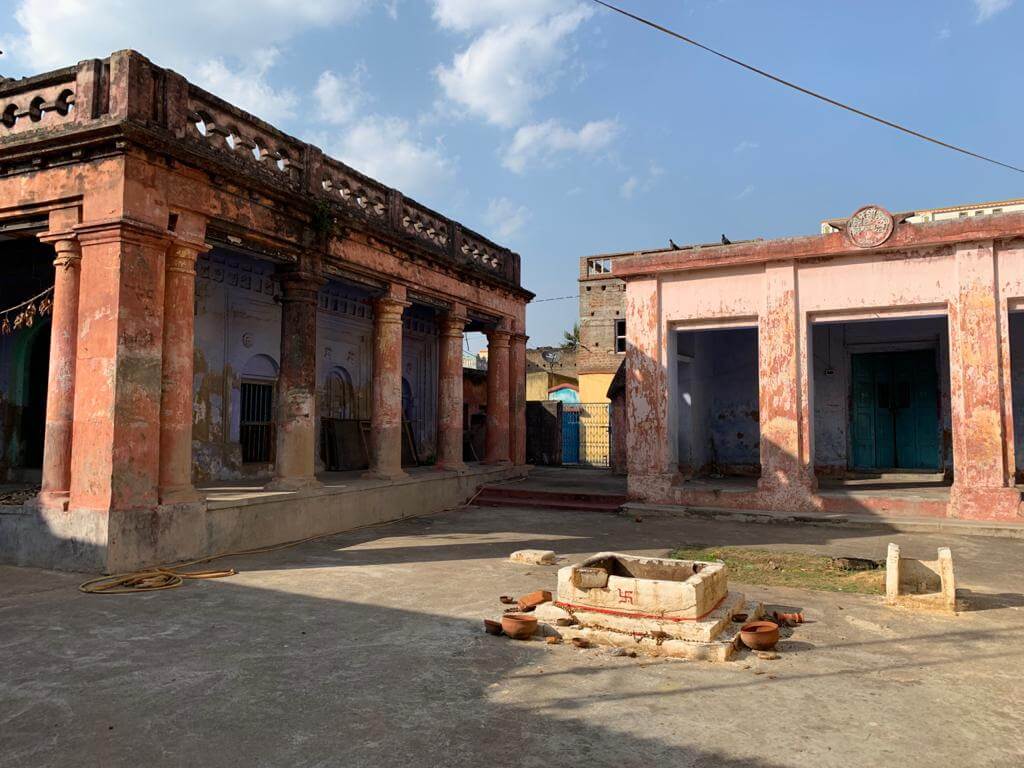
After the fabulous meal, we were taken around for a tour of the house and the village. The earlier kitchen was a huge affair, the size of a fair-sized city apartment, now in ruins and covered in undergrowth. There was a gloomy puja room. The other branch who remained in the village had renovated their portion and installed modern washrooms which we were welcomed to use. The earlier cowsheds and barns were sold out and modern buildings had come up housing new residents, the principal of the school and the doctor of the health centre. Our host regretted that under the current reservation policy people of the erstwhile backward castes held these positions and stayed in the same neighbourhood. In fact, most new construction was of outsiders who weren’t Brahmins, the newly prosperous and beneficiary of the state’s reservation policy in jobs and education and the erstwhile households of Brahmins were surviving by selling their land and living in rundown homes.
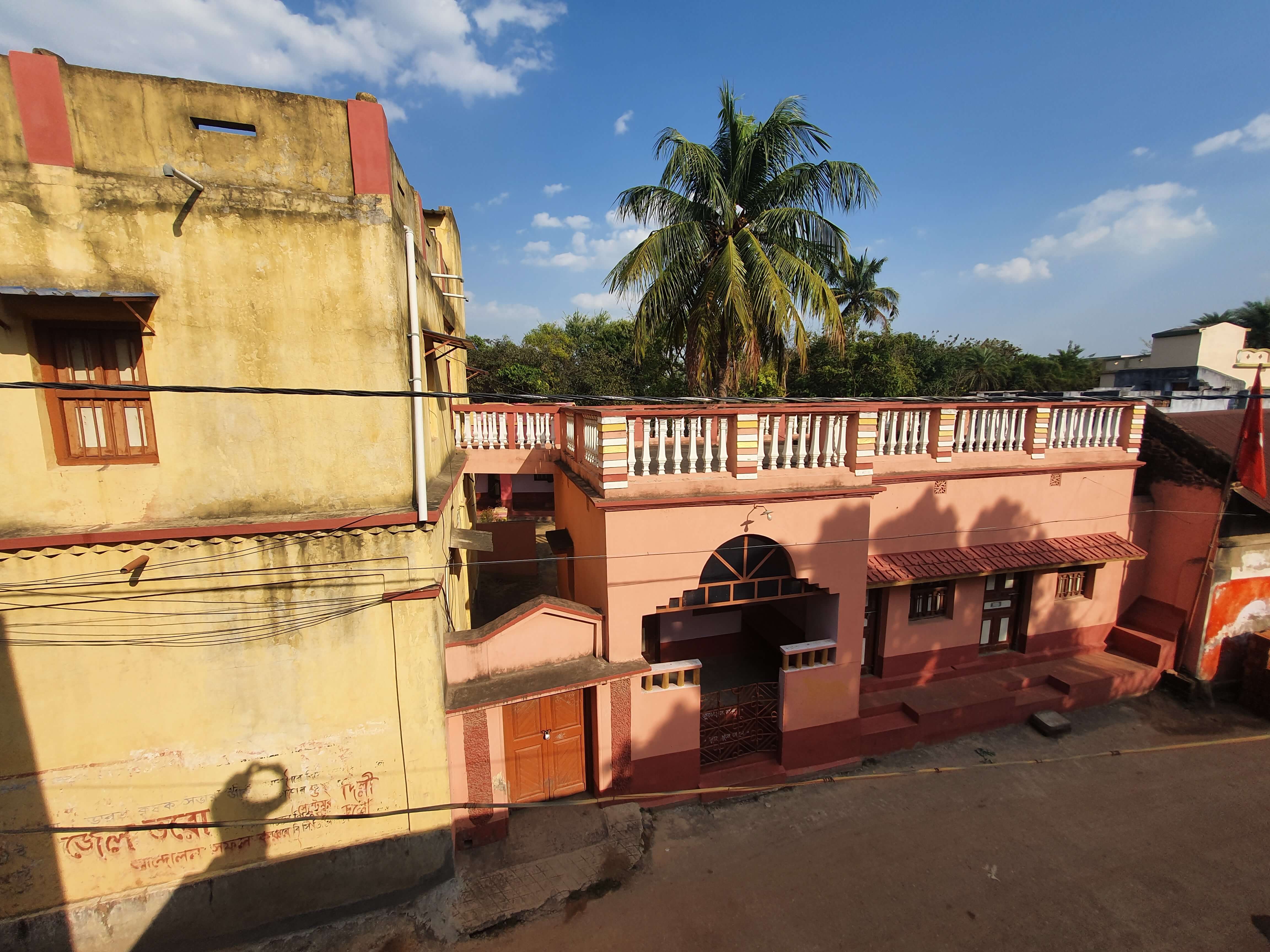
Most of the homes belonged to just three surnames. The explanation was in history. About six hundred years ago the Maharaja of Kashipur had welcomed a Sanskrit scholar from the Bhatpara region by the Ganga to settle here and gave him this village as a zamindari. He started our clan, established a temple and generally prospered. One of his descendants had no male heir and again imported two scholars from the Sanskrit school in Bhatpara and divided his zamindari between his two sons-in-law. These families flourished over the next four hundred years and populated the whole village of six thousand families.
Our family is that of the younger son-in-law and one of his descendants built the house whose ruins we were seeing some three hundred years earlier. His other accomplishment was something that has stood the test of time and is the proud landmark recorded in the Google map, the temple to our Kuldevi or clan goddess. Ganesh Janani or Durga in the form of Ganesh’s mother and the gram devta or Village God, Damodar, named after the tumultuous river that flowed through the district.
Our family is that of the younger son-in-law and one of his descendants built the house whose ruins we were seeing some three hundred years earlier. His other accomplishment was something that has stood the test of time and is the proud landmark recorded in the Google map, the temple to our Kuldevi or clan goddess. Ganesh Janani or Durga in the form of Ganesh’s mother and the gram devta or Village God, Damodar, named after the tumultuous river that flowed through the district.
We went to visit the temples, which were renovated and looked quite prosperous. It was run by a trust that was controlled by our family and the revenue came from a large tract of land having been registered as the temple trust property. Being private they still control access to the temple, limiting it to Hindu Brahmins.
Although the temple looked garish and new and not the three hundred years vintage, which the plaque had proclaimed, the idols were ancient and looked very much the part. Animal sacrifice is still very much in vogue and during the annual puja, hundreds of goats are sacrificed although buffaloes are not sacrificed any more.
Although the temple looked garish and new and not the three hundred years vintage, which the plaque had proclaimed, the idols were ancient and looked very much the part. Animal sacrifice is still very much in vogue and during the annual puja, hundreds of goats are sacrificed although buffaloes are not sacrificed any more.
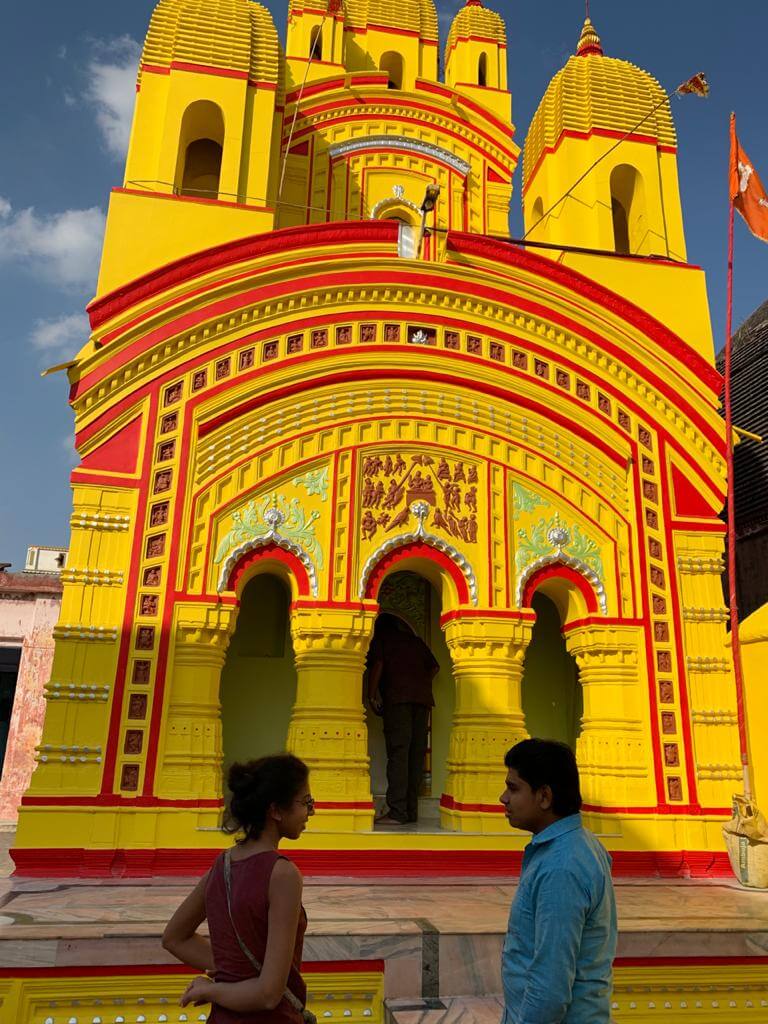
Finally, we visited the other landmark on Google maps, a more secular one, the pride of the village, the only high school in the area. Established by my great grandfather, it proudly bears the sign, established in 1911. Our family is remembered in the entire area mainly because of this school, which has a boarding facility. My grandfather had also attended this school before moving to the city and then further afield to get an engineering degree.
Interestingly the only red flag in the village belonged to the erstwhile principal, whose home was also the party office, in line with the earlier left government’s policy of filling the education system with party cadre to influence the minds of the population. However, now this once red bastion has totally shifted to the ruling party of the state and the national ruling party is the main opposition. Left is left with a single supporter. The once militant indigenous peoples’ movement and the ultra-left Maoists, who were a terror in the area are now integrated into the mainstream. Our host was the ruling party representative and his childhood friend and our hereditary family priest who was also the temple priest was the leader of the opposition.
We left before dark to avoid the narrow unlit country roads and returned to our guest house.
Next day, we went to the Susunia hills and was disappointed to find it crowded with pilgrims and sightseers. We planned to go climbing but were being dissuaded by the resort owners and other tourists as being too difficult and time-consuming.
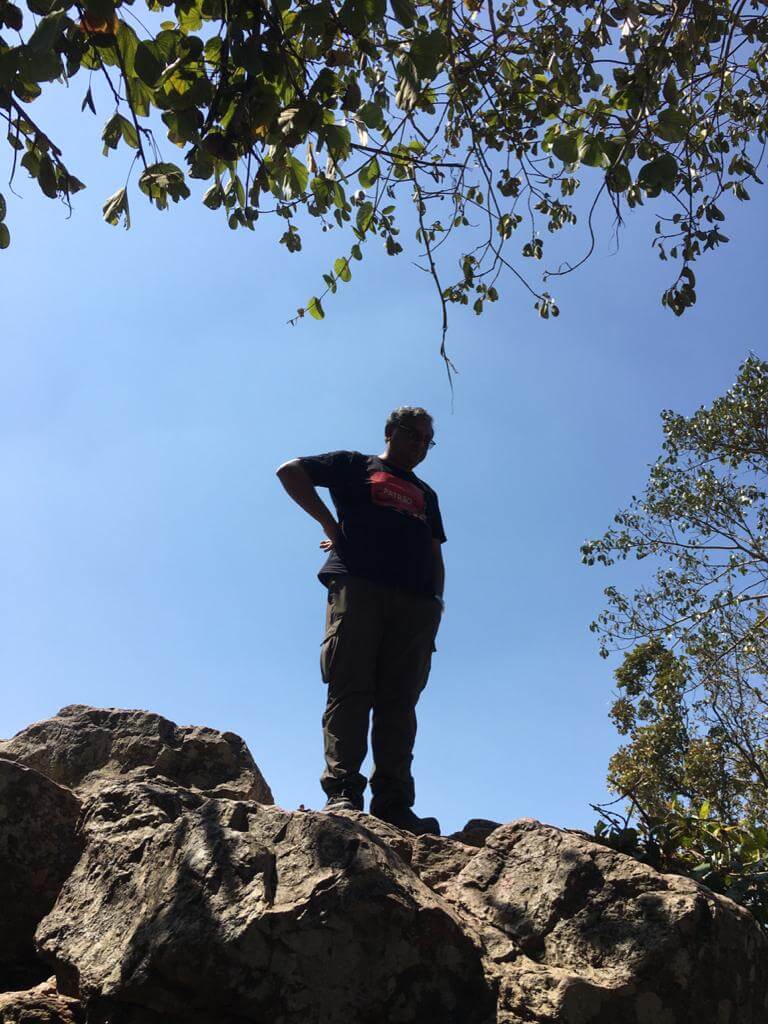
Next day, we went to the Susunia hills and was disappointed to find it crowded with pilgrims and sightseers. We planned to go climbing but were being dissuaded by the resort owners and other tourists as being too difficult and time-consuming.
So we decided to climb up a bit for the view. My daughter insisted on going on to the top. But a group of ill-mannered loud young men passed us by saying this is not for you grandpa.
I huffed and puffed all the way to the top with many breaks to wheeze, while pretending to look at the view, while my wife calmly followed. We did reach the peak and found our daughter and made it back before dark but it wasn’t a great experience.
That did it. I huffed and puffed all the way to the top with many breaks to wheeze while pretending to look at the view, while my wife calmly followed. We did reach the peak and found our daughter and made it back before dark but it wasn’t a great experience.
Early next morning we started back, happy that we had finally seen the place where our roots lay.
Photos by the author

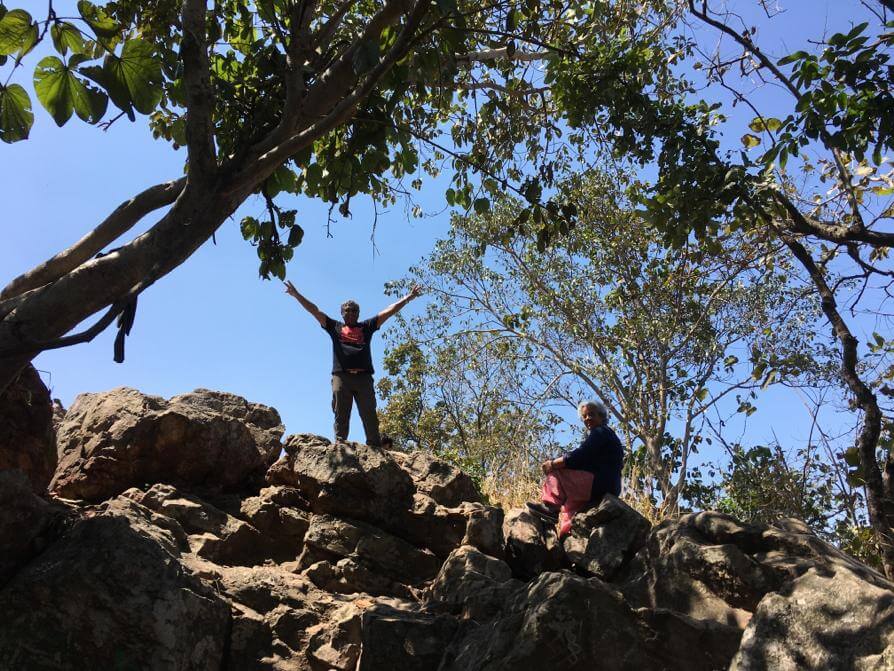

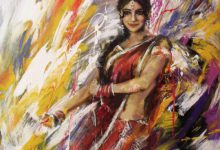


 By
By
 By
By
 By
By